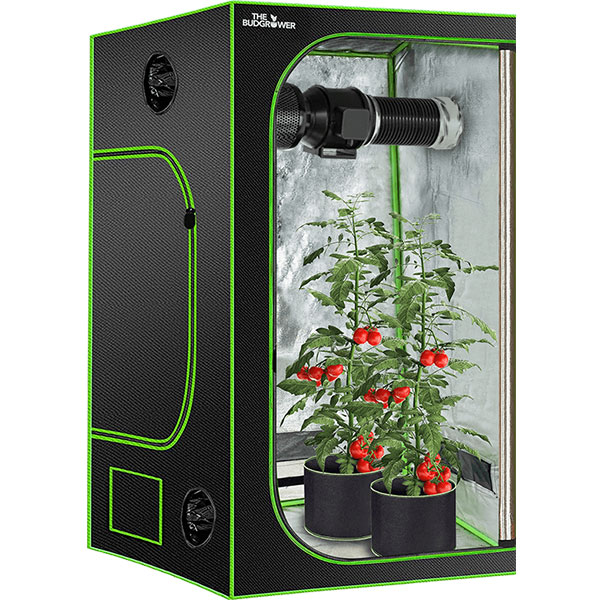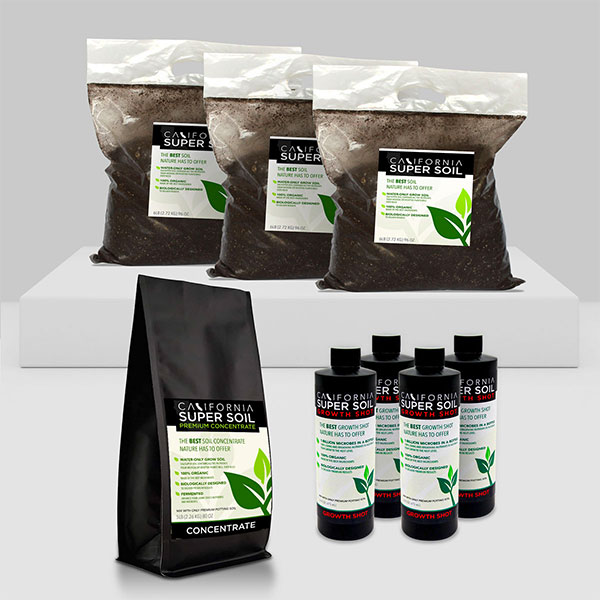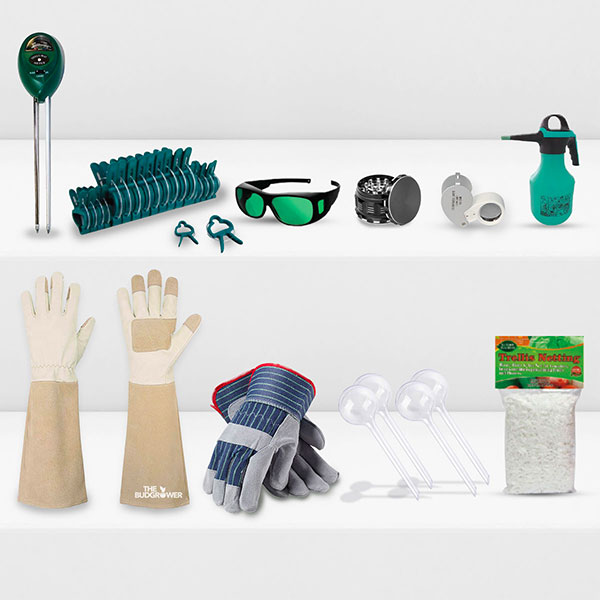Despite both light sources being present in the horticultural industry for decades, the heated debate on HID lights vs. LED lights for growing persists. LED lights are engineered to mimic the specific wavelengths responsible for stimulating photosynthesis. HID grow lights, on the other hand, are more affordable and provide sufficient UltraViolet light to grow crops successfully.
Here’s an in-depth look at each one of them.
HID Lights vs LED Lights for Growing: Which is Best?
What to Know About LED Lights
A Light Emitting Diode (LED) consists of systematically arranged semiconductors that emit light through electrical current. During the 70s, tomato indoor farmers tried this technology for the first time and were awed by its impressive yields. The main reason is that LED grow lights rapidly stimulate photosynthesis and are adaptable to different plant stages.
Are LED Lights Good for Plants?
Diodes or Semiconductors produce light when an electrical current passes through the circuit board. This system tremendously minimizes heat production because it relies on a small amount of electrical current to generate light. It’s the reason why a majority of grow tent kits contain one or two LED growing lights.
Clones and seedlings are susceptible to intense light. LED growing lights operate in different modes so that the cultivator can adjust light intensity to suit the plant’s needs. This crucial feature lowers production costs because growers don’t have to purchase extra lights to nurture young plants.
What to Know About HID Lights
High-intensity discharge lights emit light when a high electricity voltage jumps between two electrodes. The space between the electrodes contains gasses such as mercury and sodium, which evaporate rapidly and produce bright light when conducting electrical current. High-pressure sodium and metal halide bulbs belong to this category.
Are HID Lights Good for Plants?
HID lights have established a positive reputation since the late 60s based on their ability to produce full-spectrum UV light. They’re affordable compared to LED lights but have a higher power consumption rate. First-time growers also need a little training on using the lights to prevent crops from drying up due to overheating.
How Far Should a 1,000 Watt HID Light Be Away From The Plants?
The light production mode causes a high heat emission rate by HID growing lights. This causes rapid transpiration, leading to death. The potting soil also loses water rapidly through evaporation. Experts advise suspending HID bulbs at least five feet above the crops to provide light safely.

Frequently Asked Questions on HID Lights vs LED Lights for Growing
1. Are HID Lights Brighter Than LED?
A lumen is a unit used to quantify visible light. HID and LED growing lights have similar output since each can produce 8,000-10,000 lumens. LED lights, however, have the advantage of output control, while HID lights lack this feature.
2. What Runs Hotter: LED or HID?
As mentioned earlier, HID growing lights require high voltage to conduct electricity between the electrodes inside the bulbs. This is why cultivators suspend HID bulbs five feet above the crops. When mounted three feet above the plants, a 1,000-watt LED growing light will safely provide light.
3. Do LED Grow Lights Yield More Than HPS Grow Lights?
In the late ’60s, hundreds of indoor growers ditched HID bulbs in favor of the latest invention: LED growing bulbs. As mentioned earlier, LEDs are designed to produce specific wavelengths of UltraViolet rays that stimulate a high rate of photosynthesis. This results in plants generating chemical energy in abundance, thereby growing into healthy, robust crops and yielding bumper harvests.
4. Are HID Grow Lights More Reliable Than LED Lights for Results?
A few manufacturers have produced HID grow bulbs that replicate wavelengths produced by LEDs. The market statistics, however, indicate that LED grow lights dominate other sources of indoor horticultural lighting. In other words, most customers trust LEDs to yield higher Returns On Investment (ROI) than HID grow lights.
5. Are HID Grow Lights More Affordable than LED Grow Lights?
LED grow lights cost twice as much as HIDs, sometimes even higher. Maintenance costs, however, differ since LED lights require servicing once every 5-10 years. A cultivator has to purchase HIDs after 15-18 months since oxidation affects the bulb’s ability to emit light.

Which Is Better: LED or HID Grow Lights?
The hot debate on HID Lights vs LED Lights for growth starts by highlighting the pros and cons of each device.
Advantages of LED
1. Emits Sufficient Penetrative Light Under Thick Canopies
Horticultural experts invest in LEDs since they provide light in various wavelengths for different sections of the plants. Canopies, for instance, thrive under purple light, while the undergrowth requires green and yellow wavelengths. HID bulbs, unfortunately, emit broad-spectrum white UV light.
2. Best Option for Short-Season Crops
Research indicates that HID grow lights consume thrice more electricity than LEDs. A cultivator growing crops that mature within 12 weeks spends considerably less money on power bills annually than a farmer relying on HIDs.
3. LED Grow Lights Emit A Minimum Amount of Heat
As discussed earlier, HPS lights require a higher distance between them and the plants than LEDs. A cultivator using HID grow lights incurs higher power bills due to the extra cost of regulating temperature using fans. Farmers face a higher risk of losing crops due to overheating, which is why experts recommend LED grow lights to first-time indoor growers.
4. LEDs Provide Better ROI for Commercial Growers
LED grow lights provide two major benefits to commercial farmers that HIDs can’t match. The ability to stimulate a higher rate of photosynthesis enhances the crop’s ability to achieve its full potential, which boosts overall yields significantly. The second advantage is LEDs produce better penetrative light than HID grow lights, which directly contributes to impressive outputs per season.
5. LEDs Are Designed For Small Spaces
Grow tent manufacturers produce a variety of small kits containing LED growing lights because plants can grow safely without overheating. Small grow kits allow cultivators to experiment with different varieties of crops or create cloning tents. Managing temperatures inside a 24 x 24 x 48 tent is challenging when HIDs are involved due to keeping a safe distance between the bulbs and crops.
Are there drawbacks to using LED grow lights?
1. Frequent Exposure to Blue and Purple Light Causes Eye Damage
LEDs’ blue and purple light affects how the retina functions when growing. This part of the eye converts light through the pupil into electrical signals directed toward the brain. Frequent exposure causes blurred vision and increases the chances of getting cataracts.
Cultivators can avoid eye problems associated with LED growing lights by wearing protective grow room goggles. They’re quite affordable, and most grow kit sellers provide them for free.
Pros and Cons of HID Growing Lights
1. Affordability
HID growing lights cost 50-70% less than LEDs, making it more affordable for indoor growers to set up simple personal or commercial grow rooms. Growers also don’t have to spend extra money on equipment for mounting HIDs.
2. Recommended For Extremely Cold Climates
Winter strikes harder in some geographical regions than others. Crops cannot thrive in chilly weather because cold temperatures impede photosynthesis. A grower can make the indoor environment more conducive by purchasing a set of HID lights to provide warmth for the crops.
LED growing panels are susceptible to extreme weather. This makes them a high risk since they’re expensive to replace.
3. Suitable for Plants That Bloom Easily
Vegetable crops such as broccoli and kale don’t require a huge difference in light spectrums while blooming. HID growing lights can provide sufficient light to promote growth, and the cultivator spends less money on equipment than purchasing full-spectrum LED growing lights.
What are the disadvantages of using HID growing lights?
1. Unsuitable for Hot and Highly Humid Environments
The heat generated consistently by HID lights can dramatically affect plants growing inside a highly humid grow room. Such external conditions are conducive to mold infestation and cause unwanted crop decay.
2. Growing Tall Plants Is A Challenge While Using HID Lights
Some crops can grow up to six feet tall; the main challenge is insufficient penetrative light to foliage below the canopy. HID lights require four to five feet from the plants, and light penetration becomes harder whenever the crops grow taller. Such drawbacks hurt the crop’s output.
3. Cleaning HID Grow Lights Is A Taxing Job
It takes more effort to clean up a commercial grow room with this lighting mode compared to LEDs. Cleaning the bulbs is time-consuming because one has to handle the glass cautiously. HID bulbs use large metal reflectors to maximize light reflection directed toward crops. These attachments increase the workload and tedious tasks compared to owning LED grow light panels.
Conclusion
HID and LED growing lights minimize the need for cooling, are cost-effective, and can be adjusted according to the plant’s needs. Now, the decision is yours, which suits you best.










